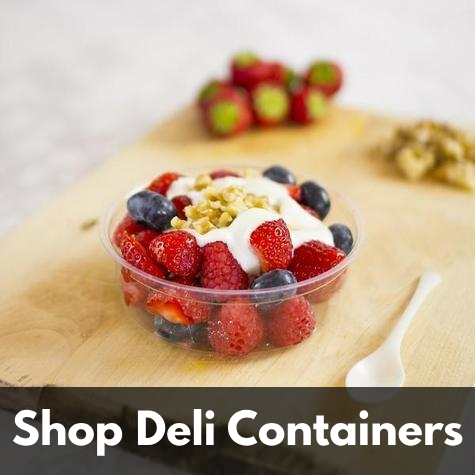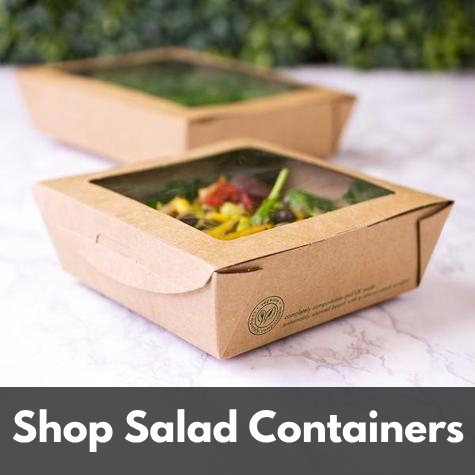
Common Misconceptions About Compostable and Biodegradable Packaging
In the quest for more sustainable packaging solutions, terms like "compostable" and "biodegradable" often come up. While both options are better for the environment than traditional plastics, there are common misconceptions that can lead to confusion.
As a wholesaler specializing in Colpac and Vegware food packaging, I’ve seen firsthand how these products can positively impact both businesses and the environment. Let’s address and debunk some myths about compostable and biodegradable packaging and clarify their differences and benefits.
Misconception 1: Compostable and Biodegradable Mean the Same Thing
- Reality: Compostable and biodegradable packaging are not identical.
- Compostable Packaging:
This type of packaging breaks down into nutrient-rich compost in a composting environment. Compostable products meet specific standards and usually require industrial composting facilities to decompose efficiently.
- Biodegradable Packaging:
Biodegradable materials break down naturally over time through the action of microorganisms. However, the process can vary significantly depending on environmental conditions, and there’s no guarantee they will turn into beneficial compost.
- Benefit:
Understanding the difference helps businesses choose the right packaging that aligns with their sustainability goals and disposal capabilities.
Misconception 2: Compostable Packaging Can Be Thrown Away Anywhere
- Reality: Compostable packaging requires specific conditions to decompose effectively.
- Industrial Composting:
Many compostable products need the high temperatures and controlled conditions found in industrial composting facilities to break down completely.
- Home Composting:
Only some compostable items are suitable for home composting. It’s important to check if the packaging is labeled for home compostability.
- Benefit:
Proper disposal ensures that compostable packaging breaks down as intended, reducing environmental impact. Educating customers on correct disposal methods is crucial.


Misconception 3: Biodegradable Packaging Disappears Quickly and Completely
- Reality: Biodegradable packaging can take varying amounts of time to break down, and it may not always decompose completely.
- Decomposition Time:
Factors such as temperature, moisture, and the presence of microorganisms affect how quickly biodegradable packaging breaks down.
- Incomplete Decomposition:
In some cases, biodegradable materials may leave behind residues or take years to decompose fully, especially in landfill conditions.
- Benefit:
Choosing certified compostable packaging can offer more predictable and environmentally beneficial outcomes.
Misconception 4: All Biodegradable and Compostable Packaging is Eco-Friendly
- Reality: While generally better than traditional plastics, not all biodegradable or compostable packaging is created equal.
- Material Source:
Some biodegradable plastics are made from fossil fuels, which are not renewable.
- End-of-Life Impact:
Without proper disposal infrastructure, the environmental benefits of compostable and biodegradable packaging can be reduced.
- Benefit:
Opting for products made from renewable resources, like plant-based materials used by Colpac and Vegware, ensures a more sustainable choice from production to disposal.
Misconception 5: Sustainable Packaging is Always More Expensive
- Reality: While some sustainable packaging options can be pricier, the long-term benefits often outweigh the initial costs.
- Economies of Scale:
As demand for sustainable packaging increases, prices are becoming more competitive.
- Brand Value:
Businesses that prioritize sustainability can attract eco-conscious customers, potentially increasing sales and customer loyalty.
- Benefit:
Investing in sustainable packaging can enhance brand reputation and customer satisfaction, leading to long-term financial benefits.
Educating Your Audience
- Look for Certifications:
Encourage customers to check for certifications like the BPI (Biodegradable Products Institute) label for compostable products. This ensures the packaging meets stringent standards.
- Proper Disposal:
Provide clear instructions on how to dispose of compostable and biodegradable packaging. Highlight the importance of using appropriate composting facilities.
- Sustainability Commitment:
Share your business’s commitment to using sustainable packaging and the positive environmental impact it has. This can build trust and encourage customers to support your efforts.
Conclusion
By addressing and debunking common misconceptions about compostable and biodegradable packaging, we can better educate ourselves and our customers. Understanding the differences and benefits of each type of packaging allows businesses to make informed, sustainable choices that positively impact the environment. At Colpac and Vegware, we are committed to providing high-quality packaging solutions that meet the needs of modern food businesses while promoting a healthier planet.
